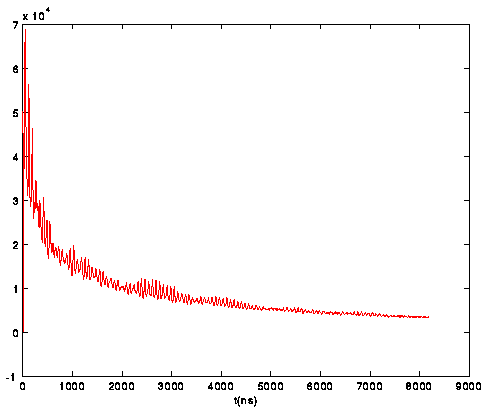ESEEM
A number of microwave pulse sequences (e.g. two-pulse, three-pulse, ...) are able to create an electron spin echo. When the time between two of these pulses is increased, the echo is usually found to decay exponentially. This decay is determined by spin-lattice and/or spin-spin relaxation (depending on the sequence used).
In some cases, this exponential decay is modulated [1,2]. The modulation results from weak interactions with nuclei (I>0) surrounding the paramagnetic centre (hyperfine and quadrupole interactions). Nuclear modulations can only be observed when the probability of the forbidden ESR transitions is not zero (the mI-value is changed). In practise, this means that either the hyperfine interactions are anisotropic or quadrupole couplings are different from zero [3,4,5].
The information derived from ESEEM is analogous to that obtained from an electron nuclear double resonance (ENDOR) experiment. The theoretical treatment of the nuclear modulation effect is based on the spin density operator formalism [2,3,4].
Publications about this topic
[1] L.G. Rowan, E.L. Hahn and W. B. Mims, "Electron spin echo envelope modulation", Phys. Rev. A, 137, 61 (1965).
[2] W.B. Mims, "Envelope modulation in spin echo experiments", Phys. Rev. B, 5, 2409 (1972).
[3] [90.7]
A. Schweiger, "New trends in pulsed EPR methodology", In Modern pulsed and continuous wave electron spin resonance, Eds. L. Kevan, M. Bowman, Wiley, 1990, p 43.
[4] S.A. Dikanov and Y.D. Tsvetkov, "Electron spin echo modulation (ESEEM) spectroscopy", CRC Press (1992).
[5] L. Kevan, "Modulation of electron spin-echo decay in solids", In Time Domain Electron Spin Resonance, Eds. L. Kevan, R.N. Schwartz Wiley, 1979, p 279.

